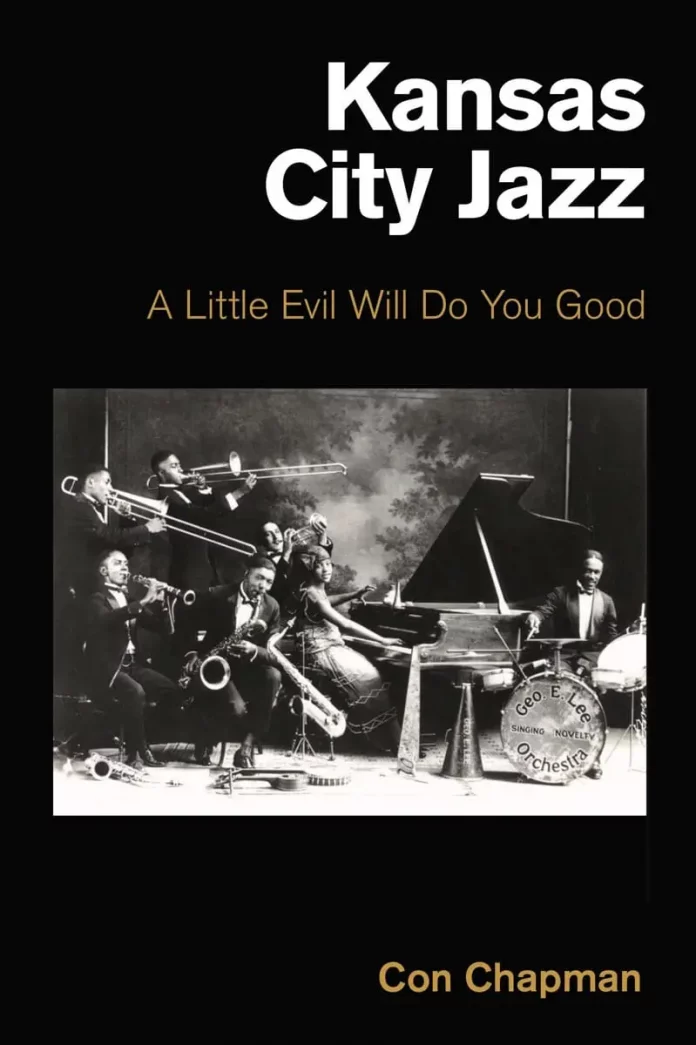The subject of jazz in Kansas City has attracted a number of writers. Before this new book appeared the most comprehensive survey was a co-operative venture by Frank Driggs and Chuck Haddix entitled Kansas City Jazz From Ragtime To Bebop – A History. These two men had collected a massive amount of information and apparently wanted to include it all in their book. Inevitably not all the information was of equal importance – for example lengthy details of the nature of venues a band played at are less interesting than the kind of music that was played there.
Author Con Chapman (who previously wrote the first book to concentrate on Johnny Hodges) was aware of the Driggs and Haddix volume and the need for something rather different. Of course, much of the same ground had to be covered, as it is – in a more free-flowing style. But there is also plenty here that is new. The opening chapter is a fine example. Entitled Roots: Ragtime, Minstrelsy And Tent Shows, this goes back to the 19th century to trace the origin of the links between black musicians and circuses, carnivals and brass bands. This chapter also introduces Wilbur Sweatman, a precursor of Roland Kirk, who was able to play three clarinets at once and recorded Down Home Rag before the ODJB’s first studio date but was ignored by Driggs and Hendrix.
The next chapter makes a worthy attempt to narrow down the meaning of “stomp” and corrects the record on the relationship of Bus Moten to Bennie. More importantly it notes for the first time the significance of Jelly Roll Morton in the early development of K.C. jazz. Morton was active there between 1911 and 1914 and spent his honeymoon there with the former Mabel Bertrand, who claimed “everybody knew him there in Kansas City”.
A review doesn’t allow for emphasis on what is fresh in each chapter of the book but some novel chapter headings are informative. Four consecutive chapters, entitled respectively Tenor Legacy, Shouters And Singers, Trumpets and Trombones, draw attention to significant contributors, and another considers the effect on rhythms of the replacement of banjo by guitar and the addition of extra items to the kit of a drummer.
The expected sections on the bands of Moten, Basie, Kirk and Leonard are present but the author never allows too much detail to detract from the broad sweep of his story. Charlie Parker, inevitably, also “takes flight” (as the chapter heading has it) before a penultimate chapter covers the band of Jay McShann. A final chapter looks at some social history and concludes, echoing the book’s subtitle, that the extraordinary flourishing of Kansas City jazz in its heyday was not unrelated to a laissez-faire attitude to gambling, alcohol and “vice”.
Apart from writing very readable prose Con Chapman is a dedicated and conscientious researcher, as the many pages of notes and references make clear. Throwing fresh light on Kansas City jazz this is a valuable book and should please anyone with a more than passing interest in the subject. Numerous black and white photos are scattered throughout.
Kansas City Jazz – A Little Evil Will Do You Good by Con Chapman. Equinox Publishing, hb, 288pp plus 70pp notes and index. ISBN-13 978 1 80050 282 6
















